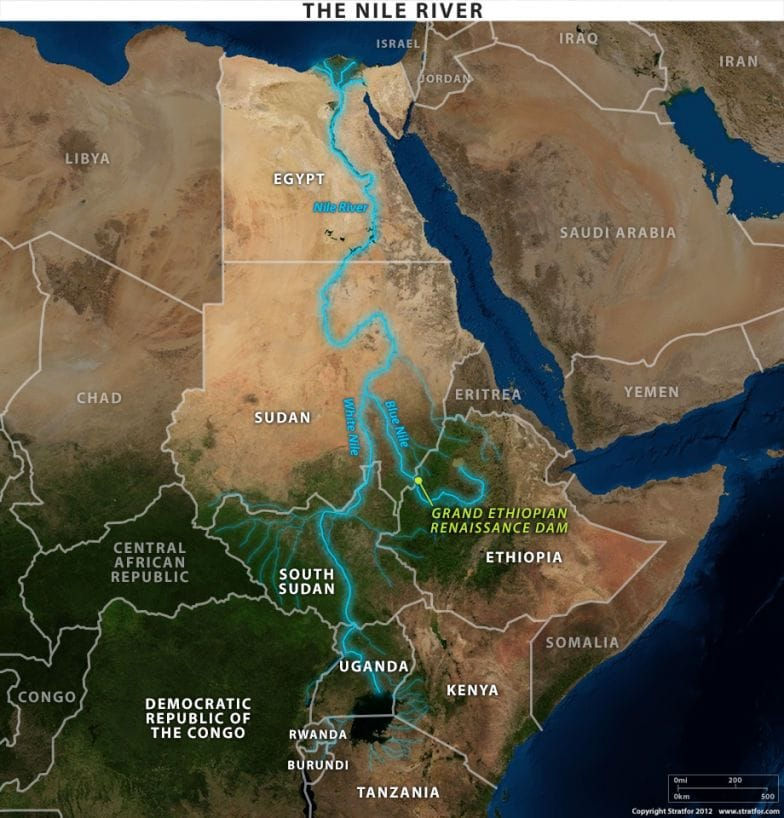THE NILE DISPUTE
- IRed Project
- Mar 26, 2020
- 4 min read
Updated: Mar 31, 2020

The argument on who has the rightful ownership over the Nile River and the right of its usage has been going on for several years between Ethiopia and Egypt with Sudan stuck in the middle. Each of these states has its own equal and crucial reason on why they need the river thus explaining why they are willing to go on a war for it. It is also important to understand that this dispute has affected the lives of the people of each country and it also took a toll on their relationship with one another. By far, the argument over the Nile River has caused other issues to arise such as a political tension as the ministers are also fighting with each other and caused a stagnant in their economic growth. PHYSIOGRAPHY OF THE NILE RIVER It is a known fact that the Nile River is the longest international river in the world with its length reaching almost 6,650 km. It includes parts of 11 states such as Rwanda, Kenya, Uganda, Sudan, Ethiopia, and the cultivated parts of Egypt. The river's availability for water throughout the year combined with the area's high temperature makes possible intensive cultivation along its bank. At one point, the Nile River was a vital waterway for transport. EGYPT’S SIDE Based on the 1929 Anglo-Egyptian Treaty, Egypt was granted an allocation of water of 48 billion cubic meters and Sudan 4 billion cubic meters. Through this treaty, Egypt has veto power over any construction or development made on the Nile River, to decrease any interference with the flow of the water. In 1959, Egypt and Sudan signed a bilateral agreement which increased their water allocations. However, both the treaty and agreement do not consider the needs of other states, especially the upstream riparian states such as Kenya, Uganda and Ethiopia. Egypt insisted that it acquired a customary right over the river based on the 1929 and 1959 agreements. Some of its leaders even threatened to go to war just to protect this right. Due to climate change and its high dependency on the river, Egypt is facing a hard time from this issue. The building of the dam will threaten its water supply and its need for irrigation. The rapid filling of the dam will restrict the flow of water thus make its level of water to decrease each year. If prolonged, the land in Egypt may dry out and lead to drought. This will cause its agriculture to decline and ultimately affects its major economic source. For this reason, Egypt was hoping that the dam will be filled in a slower pace and more water to be released. ETHIOPIA’S SIDE Ethiopia was firm with their decision that they are not and should not be bound by the treaty as it is both old and is somewhat irrelevant now. It was also stated that the project is a matter of their national sovereignty thus Egypt or any other countries does not have the right to interfere with it. They then started building the dam in 2011 without any prior consultation with Egypt. Ethiopia planned to fill the reservoir over 5 years period and to release 35 billion cubic meters of water each year to the downstream countries. With almost 65% of its population are currently not connected to any source of electricity, the existence of the Grand Renaissance Dam will greatly change the life of its citizens. Located on the Blue Nile, the dam is expected to be able to supply over 6000 megawatts of power thus enabling Ethiopia to provide enough power for its people and become a future major power exporter. SUDAN’S SIDE Sudan tried to become an intermediary for Ethiopia and Egypt. However, it failed as both States failed to reach an agreement during their meeting on January 9, 2020. Sudan and Egypt have always been in a tense relationship with each other and this occurring dispute is making them more distant from each other. Sudan has also declared its support towards the construction of the dam and already signed a deal with Ethiopia. The reason for this is simple as they will gain benefit from the hydro-electric dam, give its sense of water security and also decrease its probability of flooding as the dam will regulate the flow of the river. HOPE FOR A SOLUTION After years of discussion, through a talk held in Washington, the officials from Ethiopia, Egypt and Sudan declared on February 1, 2020, that they have reached an agreement that seems to favour all the parties. From the 4 days of intense discussion, the three countries reaffirmed the importance of transboundary cooperation in the development of the Blue Nile to improve the lives of the Egyptian, Ethiopian and Sudanese people. Some of the points agreed from the talk are the method in filling the dam during drought season and how to operate the hydro-electric dam in the long term during that season. It is expected that Ethiopia, Egypt and Sudan will sign the final agreement by the end of February 2020. It is hoped that the agreement made will be able to provide fair and equal benefits for all the countries involved and there won't be any dissatisfaction from any of them. Also, may this upcoming agreement will be able to fix their relationship with one another and ease up any existing tension before this. From: Imran Azmi & Aiena Nuriena #writers is International Relations Undergraduate Student of UniSZA #this writing not reflect IRiSS UniSZA stand











Comments